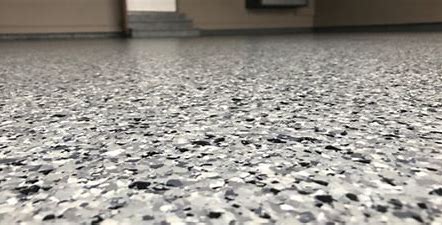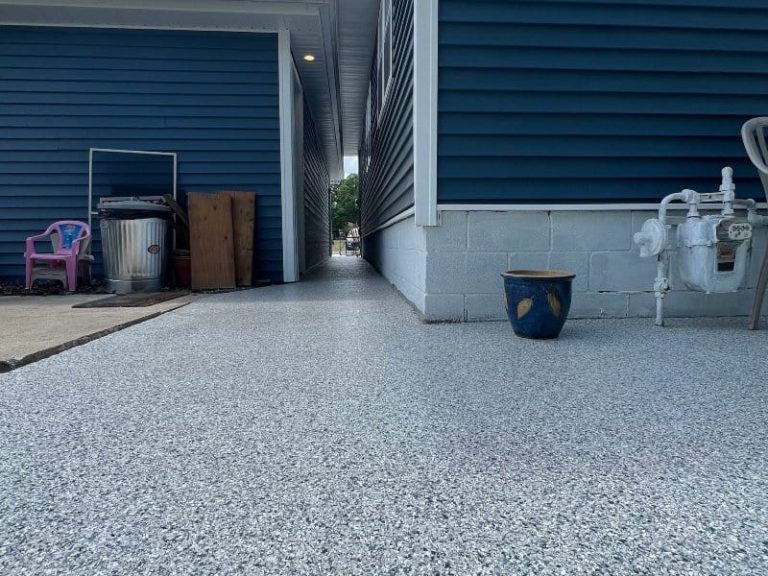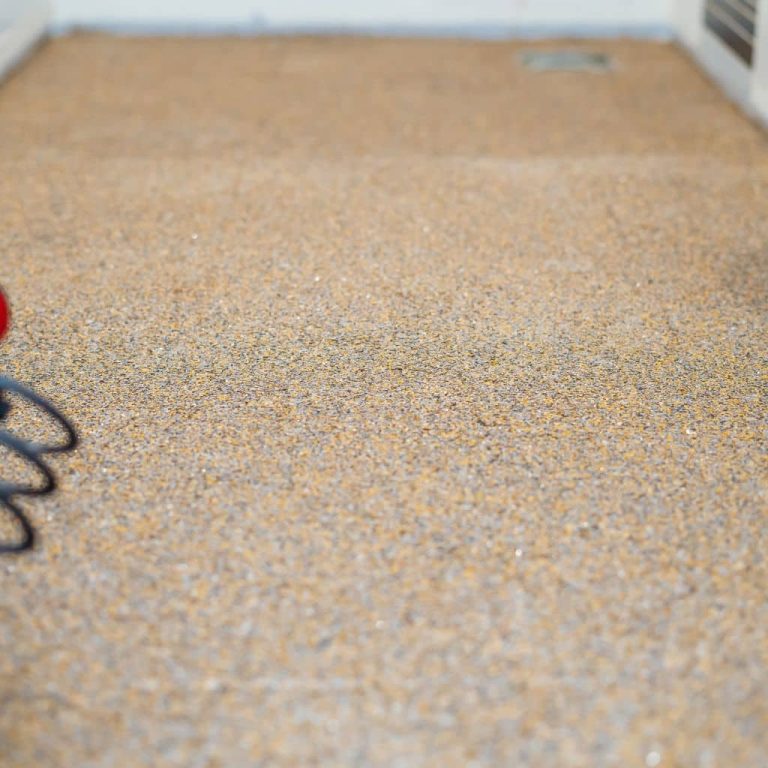Basements often get overlooked when it comes to home improvement projects. They can be cold, damp, or merely used for storage, leading many homeowners to install “standard” floors like carpet, vinyl, or laminate—if they bother finishing the space at all. But with modern technology, there’s another compelling route: installing a concrete coating in your basement.
In a recent discussion, floor-coating expert Crayton Caudill emphasized that concrete coatings aren’t just limited to garages and exterior surfaces—they also work incredibly well in basements. By bonding directly to the substrate and offering moisture tolerance, these coatings solve many of the typical issues faced by basement floors. This article explores the key differences between traditional flooring and basement concrete coatings, plus the cost and considerations that come into play if you opt for a coating rather than carpet or laminate.
Traditional Flooring vs. Concrete Coating: The Big Picture
Traditional Flooring Options
Common choices for basement flooring include carpet, laminate, vinyl planks, and, for those looking to invest a bit more, tile or engineered hardwood. Each has pros and cons:
- Carpet
- Pros: Comfortable underfoot, adds warmth, can be affordable.
- Cons: Highly prone to mold, stains, and damage from moisture. If your basement floods or even just stays slightly damp, carpet might need to be replaced.
- Laminate and Vinyl
- Pros: Relatively cheap, easy to clean, simple to install.
- Cons: Susceptible to warping or bubbling if water seeps under the planks. Once damaged by moisture, entire sections may need replacement.
- Tile
- Pros: Moisture-resistant surface, durable, wide array of designs.
- Cons: Can crack if the basement floor shifts or if the subfloor wasn’t prepared well. Grout lines may accumulate dirt or mildew in damp conditions.
- Engineered Hardwood
- Pros: A polished, upscale look. Some styles handle moisture better than solid hardwood.
- Cons: Still prone to swelling or warping with prolonged moisture exposure. Typically more expensive than laminate, vinyl, or carpet.
Concrete Coatings
The concept of a concrete coating in a basement might sound unconventional to some, but it’s gaining traction because of its durability, moisture tolerance, and design flexibility. Unlike standard paints or simple sealants, today’s coatings—like polyurea, polyaspartic, and high-quality epoxies—bond chemically to the concrete slab.
- Moisture Tolerance
- Pros: If water seeps into your basement or you have a minor flood, you won’t have to peel up your floor. Properly installed coatings resist moisture penetration.
- Cons: Very high moisture levels (such as in older homes without vapor barriers) may require additional steps like moisture testing or installing a vapor barrier prior to coating.
- Easy Maintenance
- Pros: Stains wipe up easily, and the smooth, sealed surface resists mold growth.
- Cons: You might need occasional mopping or deep cleaning if a major flood occurs, though the floor itself typically remains intact.
- Long-Term Durability
- Pros: Quality coatings can last for years—even decades—without peeling or cracking, especially if they have some flexibility built in (e.g., polyurea).
- Cons: Poor surface prep can lead to adhesion issues. Hiring an inexperienced or under-qualified contractor might compromise the floor’s longevity.
- Design Flexibility
- Pros: A wide range of decorative flakes, colors, and finishes can mimic anything from natural stone to sleek modern surfaces. Many flake blends are “designer-friendly,” as Caudill puts it.
- Cons: If you’re used to the plush feel of carpet or the warmth of hardwood, transitioning to a coated floor might take some getting used to. However, area rugs can solve much of that comfort concern.
Why Concrete Coatings Make Sense in Basements
1. Flood and Moisture Resistance
Traditional basement floors often become casualties of even minor flooding. Carpet can develop mold, laminate might bubble, and vinyl can lift at the seams. Caudill points out that a concrete coating “bonds to the concrete” so it can hold up much better when water intrudes. Rather than lugging out a soggy rug or ripping up warped planks, you can typically just mop or squeegee the water off a coated floor once you address the source of flooding.
2. Mold Prevention
Basements, by nature, tend to be damp and dark—an ideal environment for mold growth. Traditional materials like carpet or wood can trap moisture, creating a breeding ground for spores. A concrete coating, on the other hand, seals the floor from the top down. Because there’s no porous layer to harbor mold, you minimize one of the basement’s biggest health concerns.
3. Seamless Finish
No grout lines, seams, or joinery means fewer places for dirt and debris to settle. This seamless appearance makes routine cleaning a snap, which is especially welcome in a space that might see limited daily use or frequent storage transitions.
4. Versatile Design
In the past, “coated concrete” often conjured images of bland, gray surfaces in warehouses or commercial garages. But that’s changed. Modern flake systems offer interior-oriented designs, some of which resemble upscale terrazzo or decorative stone. Polyurea polyaspartic coatings can be color-matched to your décor, adding a sense of continuity between basement and main living areas.
How Much Does It Cost to Epoxy a Basement Floor?
Although Caudill frequently promotes polyurea and polyaspartic coatings over standard epoxy, he notes that basement floor coatings in general cost “anywhere from 7 to 12 dollars per square foot,” depending on factors like:
- Floor Condition: If your basement floor has cracks, spalling, or other damage, repairs add labor and materials.
- Size of the Space: Larger basements might slightly reduce the per-square-foot rate because of economies of scale, but total project cost still climbs with square footage.
- Coating System Chosen: A basic epoxy may fall on the lower end; polyurea polyaspartic systems often occupy the higher price range.
- Extra Prep or Features: If you need a moisture vapor barrier or specialized decorative touches, costs can push toward the higher end of the spectrum.
While $7–$12 per square foot can sound steep compared to a budget DIY approach, it’s essential to note that cheaper options might fail faster or require eventual replacement—particularly in a moisture-prone basement.
Debunking Common Myths About Concrete Coatings in Basements
- Myth: “Concrete coatings will be too cold underfoot.”
Fact: Most basement floors feel cool because they’re below ground level, not because of the coating type. You can always add area rugs or heating solutions like radiant heat if you want a warmer environment. - Myth: “You lose design variety by skipping carpet or wood.”
Fact: Modern coatings come in myriad colors and flake blends. You can achieve anything from a minimalist monochrome look to a vibrant, speckled finish. - Myth: “Coatings are too industrial for a family basement.”
Fact: Today’s decorative systems are often used in high-end residential spaces. Plus, coatings create a low-maintenance, moisture-resistant floor that actually suits family activities and occasional basement spills. - Myth: “Epoxy or polyurea might peel up if it’s damp.”
Fact: Correct surface prep, including diamond grinding and moisture testing, is essential. If the installer identifies and manages moisture issues—like by adding a vapor barrier—chances of peeling are minimal.
Installation Process for a Basement Concrete Coating
Before deciding whether a coating is right for your basement, it helps to understand how professionals typically install them:
- Inspection and Moisture Testing: A pro checks for cracks, pitting, and moisture issues. If the floor’s humidity level is too high, adding a vapor barrier may be necessary.
- Mechanical Grinding or Shot Blasting: This step opens the pores of the concrete and removes contaminants, ensuring the new coating bonds correctly.
- Crack Repair: Gaps or holes in the floor are filled and leveled.
- Base Coat Application: Epoxy, polyurea, or another selected product is carefully applied to the prepped floor.
- Flake Broadcast (If Desired): Decorative flakes are scattered onto the wet base layer for both aesthetic and functional benefits (like slip resistance).
- Scraping and Top Coat: Once the base layer cures, excess flakes are removed. A top coat—often polyaspartic for better UV resistance and extra durability—is then applied, sealing the system.
This process can often be completed in as little as one or two days, depending on the size of your basement and the complexity of the job.
Is a Concrete Coating Right for Your Basement?
Weighing the pros and cons of a basement coating depends on several personal factors:
- Flood Risk: If your basement is known to flood or has limited drainage options, a coating might save you from future tear-outs and replacements.
- Budget: Coatings can cost more initially, but their longevity and easier maintenance may offset the expense over time.
- Desired Look: If you love plush carpet or the warmth of wood, you may view coatings as a compromise. However, you might find the design possibilities of flakes and custom finishes surprisingly appealing.
- Installation Quality: Professional installation is critical. Even the best product can fail if it’s not applied correctly. Seek out a contractor with strong references and clear warranties.
Benefits for Finished and Unfinished Basements
- Finished Basements: If you’re converting a basement into a rec room, home theater, or office, a decorative coating can give it a modern, polished look that integrates well with the rest of your home’s aesthetic.
- Unfinished Basements: Even if you don’t plan on turning the basement into a living space, a coating offers a cleaner, more functional surface for storage, workshops, or laundry areas—especially in older homes where the original slab is uneven or prone to dust.
Maintenance and Cleaning
Once installed, a coated basement floor requires minimal upkeep. Occasional sweeping, light mopping, or vacuuming keeps it free of dust and debris. In the event of spills—whether from a leaky pipe or an impromptu water balloon fight—just wipe up the water and disinfect if needed. Unlike carpets that might demand expensive steam cleaning or replacement after water damage, concrete coatings bounce back quickly from most household mishaps.
Potential Drawbacks
While coated floors offer numerous advantages, consider these potential downsides:
- Initial Cost: At $7–$12 per square foot, the price can be higher than some cheaper basement flooring options, though it’s comparable to mid-range to high-end tiles or luxury vinyl.
- Less “Homey” Underfoot: If you crave the warmth and softness of carpet, a coated floor might feel more industrial initially—though area rugs and space heaters can mitigate this effect.
- Professional-Only (for Best Results): DIY attempts can lead to peeling or bubbles if the floor isn’t prepared properly. Hiring seasoned professionals is recommended, but that adds to the cost.
Conclusion
A concrete coating in your basement may not be the first thing you think of when revamping that lower level, but it offers substantial benefits—particularly in terms of moisture tolerance, ease of cleaning, and overall durability. Crayton Caudill underscores that these coatings “bond to the concrete,” meaning if your basement faces the occasional water leak or flooding event, you won’t be forced to rip out and replace the entire floor. Instead, you can typically dry out the area and move on, saving both time and money.
From a cosmetic standpoint, interior-oriented flakes and color blends can transform a once-dark, neglected space into a bright, functional extension of your home. Costs typically land in the $7–$12 per square foot range, a figure that often covers thorough surface prep, crack repair, the coating system itself, and a top coat for added protection. If you’re looking for a flooring option that marries practicality with a modern design twist, a professionally installed concrete coating might just be the perfect fit for your basement.


